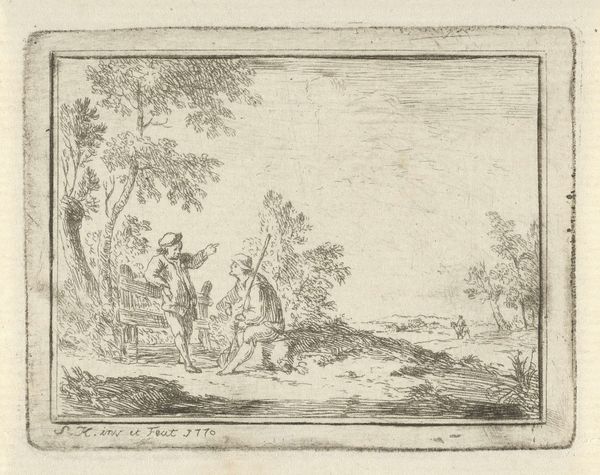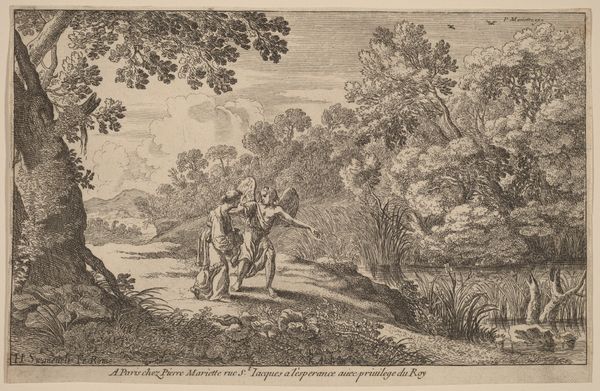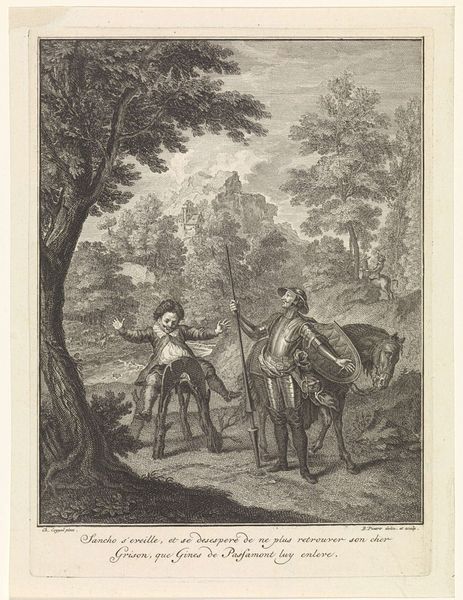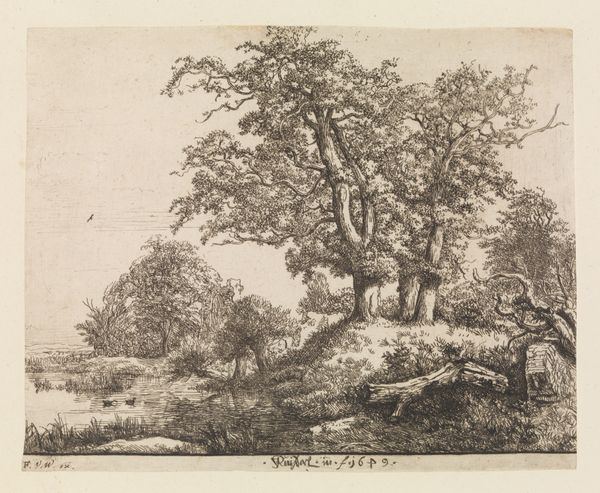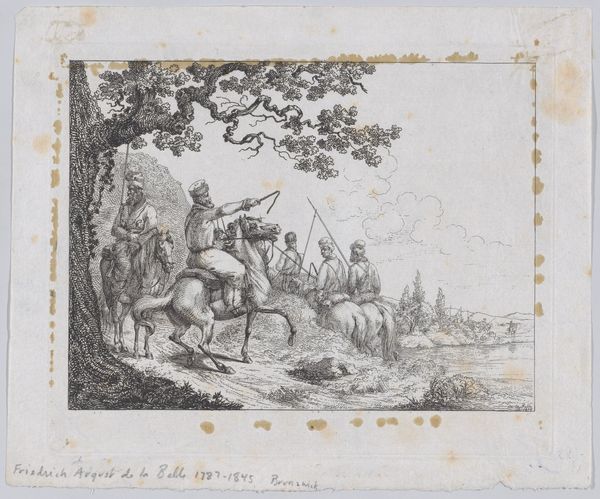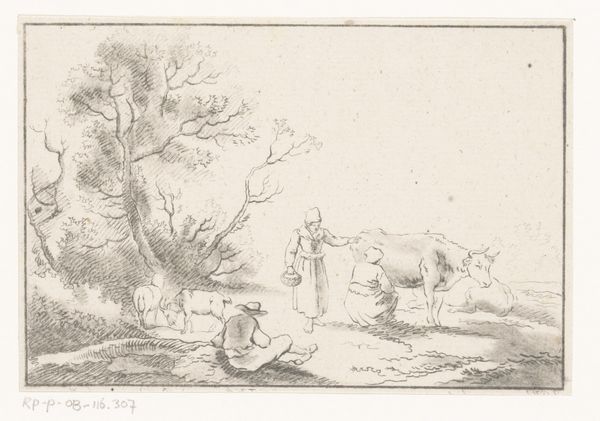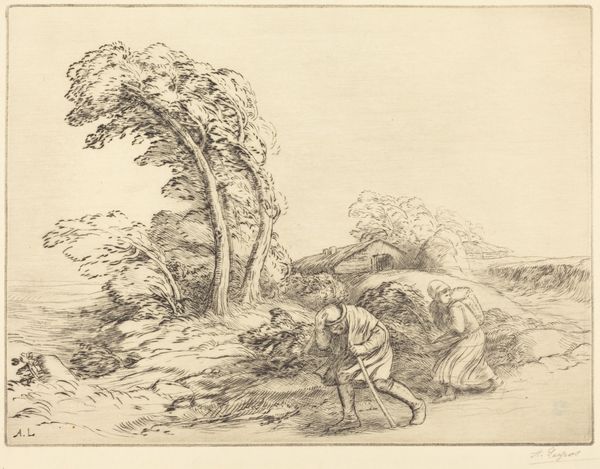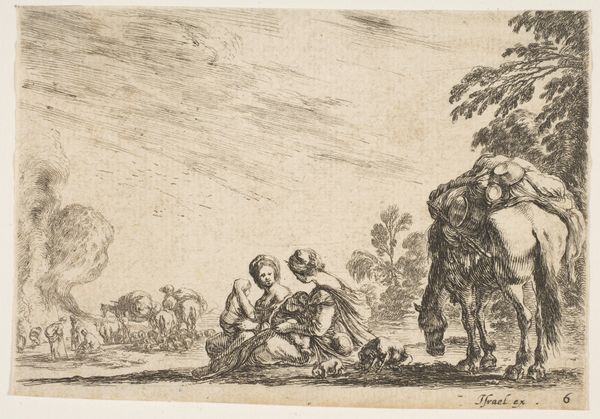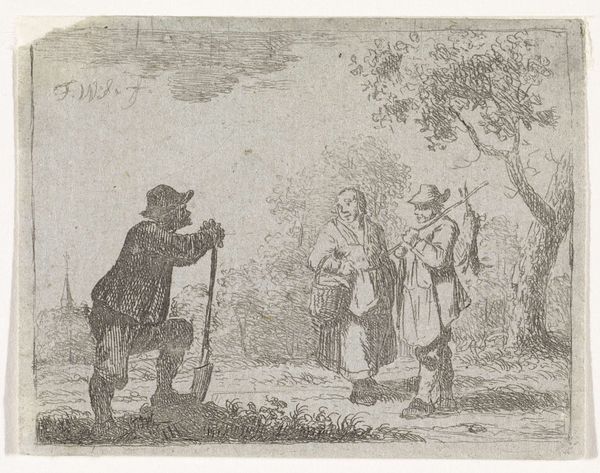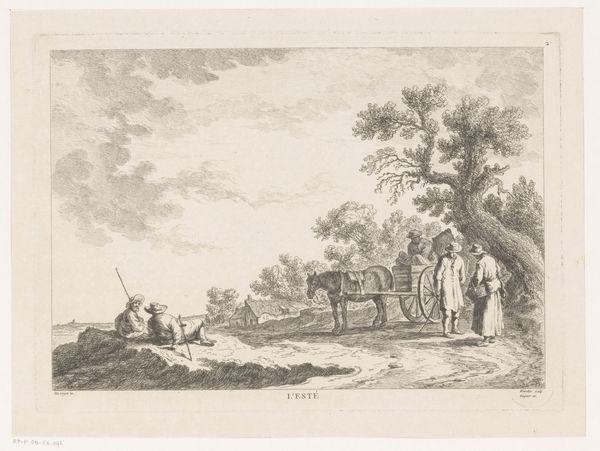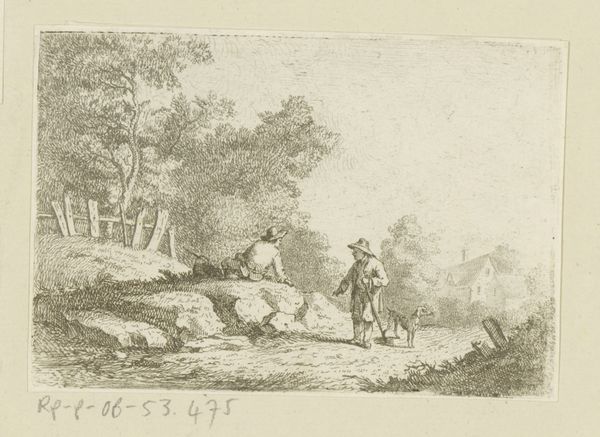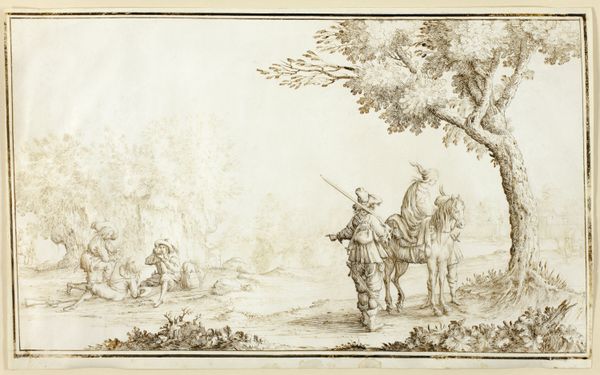
Man pratend met vrouw met kind op pad bij een boom 1739 - 1804
0:00
0:00
Dimensions: height 93 mm, width 119 mm
Copyright: Rijks Museum: Open Domain
Curator: What a captivating image. This is a drawing by Johann Andreas Benjamin Nothnagel, created sometime between 1739 and 1804. The title translates to "Man Talking to Woman with Child on Path by a Tree." It’s rendered with pen and ink, a delicate scene in a landscape setting. Editor: My immediate reaction is one of serenity. It's quite unassuming, almost like eavesdropping on a quiet moment. The composition draws my eye to the exchange between the figures, and the tree provides a calming backdrop. Curator: It is interesting how Nothnagel captured a sense of everyday life. You have this man seemingly in conversation with a woman carrying goods, presumably from the market; a child stands by her side. These depictions of genre scenes were popular, particularly within the burgeoning middle class, seeking art that reflected their own realities and values. The figures lack grandeur; their postures reflect the informal ease of an impromptu dialogue, challenging assumptions about class, gender, and social identity. Editor: Exactly. Their attire isn’t particularly lavish, suggesting a common social stratum. It's tempting to construct narratives about the exchange – perhaps directions, a commentary on their wares. But in this moment, what meaning can we attribute to a woman, who perhaps could even be traveling alone on foot with a child at this time? I want to resist seeing it through an idealistic lens. I keep thinking about how power imbalances are shaped by class and economic status and asking myself who does this encounter truly benefit? Curator: Right, we can analyze this in connection to gender roles. While the artwork may appear benign on the surface, what expectations and social structures are at work here? I believe that analyzing these aspects allows the drawing to transcend simple aesthetic appeal and function as an instrument that documents social commentary on the power of speech and the nature of encounters across social and gender boundaries. Editor: This really brings a powerful layer to this work. I came in seeing it as simple pastoral art, a romantic tableau of daily life in a very unequal world. Curator: And in unpacking it, hopefully others may now feel empowered to challenge their assumptions, engage more critically, and develop their consciousness around such themes and interpretations of these subtle works. Editor: Precisely. And it invites questions, urging one to think about what we choose to observe in the world.
Comments
No comments
Be the first to comment and join the conversation on the ultimate creative platform.
